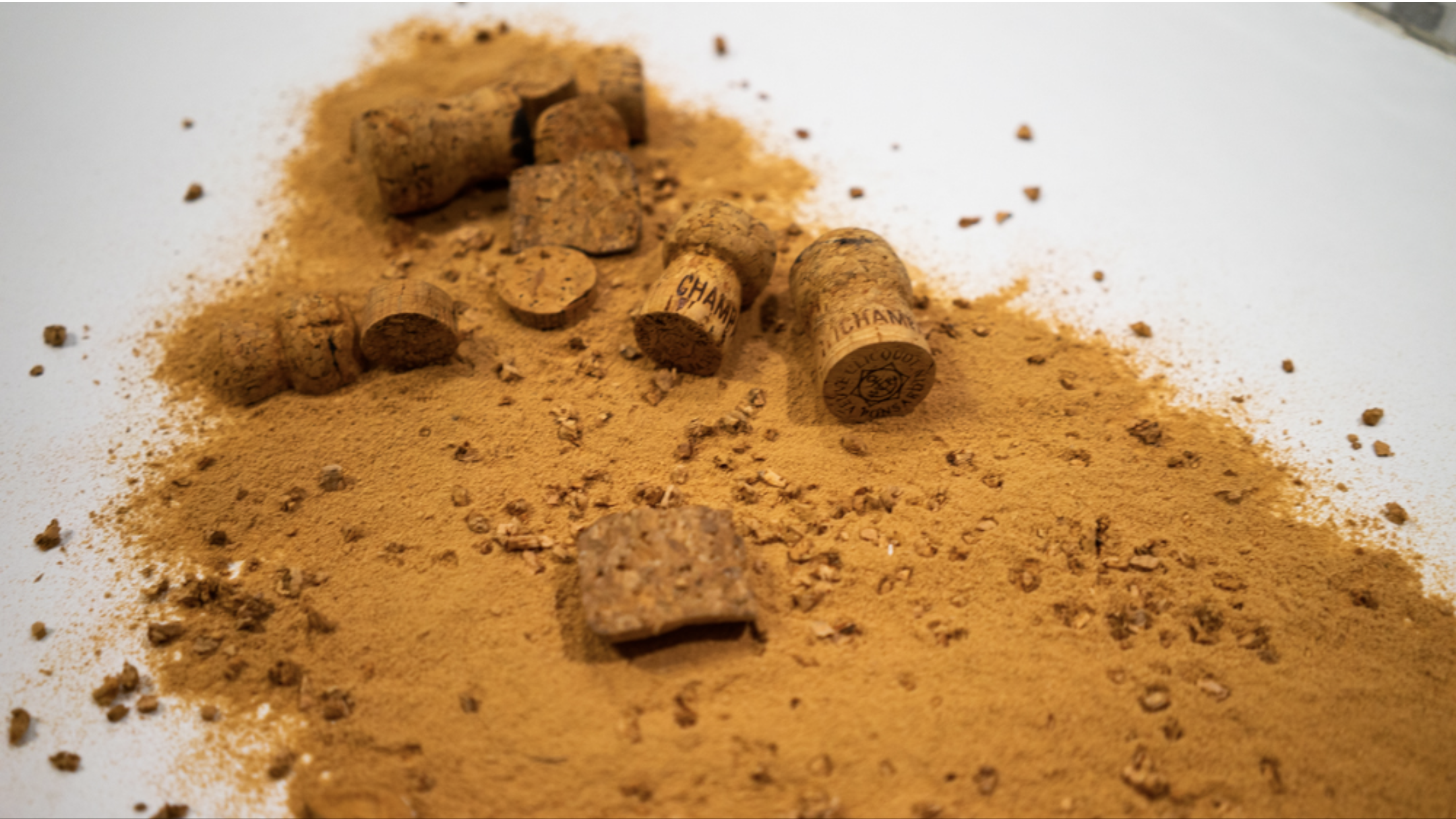
Material world
The material world project aims to find value in waste material. Our brief was to find material (or materials) that had been disposed of by a local business, and turn it into a new material.Then evaluate its qualities based on mechanical testing and user feedback and create proposals for products and contexts where they could be applied; in order to provide the business with a more circular model and help close the loop of material flows.
Our chosen materials were potato waste and old wine corks
Timeline
3 weeks (January 2020)
Group members
William Johnston, Jacob Bleakley + myself
My role
Experimenting with the waste material + ideate how it could be used.
Skills
material experimentation, mechanical testing, circular design
Software
InDesign, Photoshop, CES
Problem
Food waste disposal is a large problem faced by business’. Potato peels are often put into sewage, causing blockages and contributing to fatbergs. We contacted local grocers and supermarkets and they allowed us to take their potato waste off their hands.
Although cork is abundant, it is important to reuse it when possible to make sure that the growth can keep up with the demand. Therefore we asked a local bar to experiment with their collected wine corks.
Material Experiments
Starch extraction
Potatoes are very high in starch and due to the complex sugars in starch, they make great natural glues. To extract the start from the potato peels:
Shred the potato peel and soak in water (optimum temperature is 21.5 degrees.
Filter mixture through fabric twice
Cooking techniques
When the starch was heated in the pan it began very thin and watery, however after 20 minutes over a low heat and mixing continually with a spatula, it plasticised.
Used the oven at 100 degrees to dry samples out by evaporating the water. this take varying lengths of time from 30 minutes to 2 hours.
Let this settle for 20 minutes and remove excess water.
Lay out starch on a tray and let it dry. Rehydrate when it needs to be used.
Material learning
Although the material experiments seem quite simple, a lot was learnt about how different mixtures of materials behave, that could be carried forward into future material experimentation:
The more vinegar used, the more the starch breaks down to sugars and the better the glue created.
The higher starch ratio used in a recipe, the better the glue created.
Longer heating time the better adhesive created
Each new material was then tested for:
Ultimate tensile strength
Ultimate bending strength
Thermal conductivity
Water absorbancy
Flammability

















